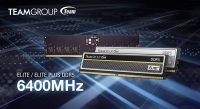(Auszug aus der Pressemitteilung)

Taipei, Taiwan, September 27th 2011 – VIA Technologies, Inc, a leading innovator of power efficient x86 processor platforms, today announced the next generation VIA EPIA-M720 Mini-ITX board. Featuring the VIA VX900 MSP, the VIA EPIA-M720 is an upgrade from the VIA EPIA-LN delivering DDR3 and SATA II support for greater performance, richer digital media and extended connectivity for embedded devices.
Combining a VIA 1.0GHz C7 processor with the VIA VX900 unified all-in-one media system processor, the VIA EPIA-M720 delivers a highly optimized platform that boasts comprehensive HD video performance, HD audio and HDMI support in a compact, power-efficient package to meet the broader scope of needs for today’s advanced digital signage, POS, Kiosk, ATM, home automation, healthcare and media client system design applications.

“Featuring the VIA VX900 MSP and improved connectivity, the VIA EPIA-M720 allows for an easy upgrade for customers,” said Epan Wu, Head of the VIA Embedded Platform Division, VIA Technologies, Inc. “The VIA EPIA-M720 offers substantial performance improvements which will enable the creation of a wealth of innovative next generation embedded devices.”
VIA EPIA-M720 Mini-ITX Board
Measuring just 17cm x 17cm the VIA EPIA-M720 features the 1.0GHz VIA C7 processor for fanless configurations with ultra low power requirements. The VIA C7 processor is combined with the VIA VX900 MSP, supporting up to 4GB of DDR3 1066 DIMM system memory and featuring the VIA ChromotionHD 2.0 video processor. The VIA EPIA-M720 also adds support for Windows 7 and Windows Embedded 7 operating systems.
Rear panel I/O includes two PS/2 ports (KB/MS), one HDMI port, one VGA port, one COM port, one Gigabit LAN port, two USB 2.0 ports and three audio jacks. An onboard PCI slot is accompanied with two SATA II connectors, an additional COM port, a further three USB 2.0 pin headers for 6 USB ports (including two optional ports), SPDIF out, one pin header for LPT and an SMBus header.


Neueste Kommentare
22. Januar 2025
14. Januar 2025
14. Januar 2025
31. Dezember 2024
28. Dezember 2024
27. Dezember 2024